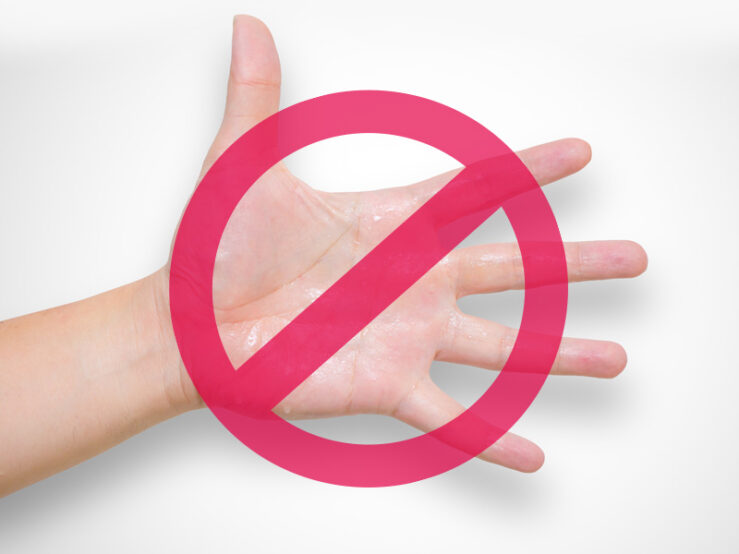You’ve probably seen sportsmen wearing various wristbands while participating in or watching sports. I’ve never worn a wristband while participating in sports before, but there are times when doing so makes sense. Consequently, why do tennis players wear wristbands?
The main reason wristbands are used by tennis players is to absorb sweat and stop it from getting on their hands. Tennis players and athletes who participate in other sports may also have diminished grip as a result of hand sweat. In addition to looking great and supporting causes, athletes wear wristbands.
Related to: Best Tennis Elbow Braces
Why Do Tennis Players Wear Wristbands?
Tennis matches are renowned for being both extremely intense and protracted. The purpose of these wristbands, sometimes known as sweatbands, becomes clear once you consider the quantity of sunlight and the paved outdoor courts.
These days, they also come in a variety of colors and fabrics that can match the attire you’ll be sporting during the game. Tennis matches can involve long stretches of strenuous effort outdoors, frequently in the sun, on a paved court.
When you combine these things, you start to sweat a lot. Tennis attire is not needed, but wristbands can be useful accessories to keep sweat out of your eyes and off your hands, enhancing your grip and field of vision.
Keep Palms From Sweating

The primary motivation is to keep sweat from getting on your hands. Tennis players move around the court quickly and vigorously while playing the game. Without truly perspiring as much as tennis professionals do, it is quite challenging to keep up with the pace.
Sweating is a well-known sign of intensive and extremely demanding activity. Due to the energy consumption and fat burning, it also aids in maintaining body temperature and removing waste through pores.
Since tennis racquets are typically carried in one hand and are an essential component of the game, sweat typically collects around the wrist rather than in the armpits or palms. Therefore, wristbands are useful in this situation.
Wristbands are utilized so that sweat can flow down to the grip and the player doesn’t lose control of the racquet since without one the player could be in serious danger.
To Blot Their Forehead Sweat
When participating in a sport, one typically perspires a lot. This is perfectly normal as the physical activity activates your sweat glands, which then try to cool down your entire body, but especially your forehead.
When there is a little (or more) breeze, the sweat evaporates; removing all the heat from your body and making you feel cold. Given the amount of water in the body and the heat present, the body produces a lot of sweat as a means of cooling you down.
Sweat might taste salty when it comes in touch with your tongue because it contains salt, which makes up the majority of the waste products from your body. It’s a very different and challenging feeling when it gets to your eyes.
When this perspiration comes into contact with your eyes, it may distract you and momentarily impair your vision. The participants are forced to do one of two things: close their eyes or wipe their sweat with the palms of their hands.
Tennis sweatbands make it much simpler because they are composed of supple, very absorbent materials like cotton. This can be used to wipe away perspiration and prevent game interruptions.
Brand’s Promotion
Tennis players, both male and female, have a global impact on fans from all walks of life as well as the sport. Rafael and Serena are two names that immediately conjure images of tennis players. They are well-known around the world for both their great tennis abilities and the volume of media attention they receive.

For all the manufacturers of sporting items, this makes them extremely popular. In essence, they aid in the promotion of all of these businesses’ goods, and because wristbands are so small, you’ll typically see them bearing the logos of the firms that produce them.
A Little Extra Service
Tennis players put their wrists through a lot of movement and strain, especially while hitting backhands. Carpal bones are a group of eight bones that make up the wrist and its skeletal system. One incorrect movement could result in the muscles being completely torn because the ligaments connecting the wrist and the hand are under a lot of strain.
Additionally, carpal fractures may be present. Since wrists are so crucial to a tennis game, this is obviously not ideal. Due to the wristbands’ substantial thickness, they also offer the necessary support for the ligaments and carpal bones. These aid in bolstering and aid in preventing harm during play, particularly from incorrect wrist bands.
Athletes with superstitions may wear wristbands
Many athletes wear wristbands because they think doing so will improve their performance or the results of their competitions. When an athlete wears a wristband and succeeds or wins a competition, they could attribute their success to the bracelet and decide to wear it again the next time.
They believe there is no justification for messing with success. Baseball is one sport where superstitions are particularly common; however, they are present in many sports. Many baseball players may repeat their pregame routines if they have success in previous games.
These behaviors could include stretching in a specific way, sitting in a specific spot in the dugout, drawing in the ground before hitting, repeatedly pressing their foot into the batter’s box, eating specific meals prior to playing, and many other things. Anyone who can envision it has probably already done it.
Types of Wristbands
The wristbands that players wear while competing come in a variety of designs. The best choice for wiping sweat off the face and keeping it off the hands is a bracelet made of cloth. Athletic tape isn’t typically used to make wristbands, but it can be utilized to give athletes more wrist support to help them avoid injuries.
Athletic tape is commonly used by players in many football positions to support their wrists. Due to the explosive nature of their positions, offensive and defensive linemen tape their wrists the most.
Each time they play, these enormous men have to crash into each other, which can cause wrists to suffer catastrophic injuries either immediately or over time. They use athletic tape because it absorbs shock better and decreases the chance that their wrists may revert to their natural range of motion.
Any athlete would bandage their wrists with athletic tape for the same reasons. Because there are many situations in soccer where players might fall on the ground, whether they trip, fall while attempting to win possession, or are fouled, many soccer players choose to tape their wrists to protect them.
Humans’ innate nature is to extend our hands to defend ourselves when falling. Although it makes sense, doing so can cause us to stumble and even dislocate, sprain, or shatter our wrists. These are avoided by the tape’s additional layer of protection.
Additionally, it’s not unusual to see players sporting silicone wristbands. Although these wristbands don’t provide any performance advantages, they do provide athletes the chance to express themselves and support causes close to their hearts.
Create Awareness
It is also common for athletes to wear silicone wristbands to promote causes they support. Lance Armstrong was the first well-known athlete to pioneer this fashion with his “Livestrong” bracelets. In 1997, Armstrong established the Livestrong Foundation to promote cancer awareness.
Given his own struggles with testicular cancer, Armstrong placed a high value on cancer awareness. Later, cancer progressed to his brain, necessitating many procedures to remove it in 1996.
Armstrong won his first of seven successive Tour de France championships in 1999, years after the operations. After winning his first race, Armstrong gained worldwide fame and became a source of motivation and hope for those with and without cancer.
Numerous individuals still revere Armstrong despite his admission to Oprah in 2013 that he had taken performance-enhancing drugs to help him win the Tour de France, which considerably increased cancer awareness.
These bracelets are still available, and Livestrong is a well-known brand. Whatever your opinion of Armstrong, he overcame cancer and is an inspiration to people all across the world. Another athlete that wore silicone wristbands to support a cause was Andy Roddick.
The “No Compromise” wristbands Roddick wore while playing tennis were meant to generate money for impoverished kids. The Andy Roddick Foundation, established in 2000 to provide underprivileged youngsters with greater opportunities to learn, flourish, and succeed, received all of the proceeds from the sale of these wristbands.
LeBron James frequently sports wristbands while competing in basketball contests. These wristbands, which read “I Promise,” stand for the commitment LeBron made to children in Akron public schools.
The pupils pledged that they would keep attending class, treat everyone around them with respect, and make wise judgments. LeBron promised the youngsters that he will serve as a positive role model for them both on and off the court.
LeBron has demonstrated that he is a greater person than just a brilliant basketball player. Athletes may also wear wristbands to draw attention to a social issue they strongly disagree with or simply because they think wristbands are stylish.
FAQ’S
Tennis wristbands make it simple for sportsmen to dry their hands and hair without being sidetracked. Tennis wristbands are also worn by players to avoid having sweaty hands, which could be detrimental to their performance during a match.
Sweatbands help you stay dry and cool when exercising or playing sports like a basketball by absorbing perspiration. Headbands and wrist sweatbands are the two most popular types. Headbands will absorb up perspiration before they can drip into your eyes, and wrist sweatbands can minimize accidents brought on by slippery hands.
By wearing a wristband, you can avoid losing your grip due to sweat, which could cost you a point or, worse yet, the entire game. Your body cools you down through perspiring. However, when you are exercising, sweating might be an inconvenience. Your attention may be diverted as a result of sweat running into your eyes from your forehead.
